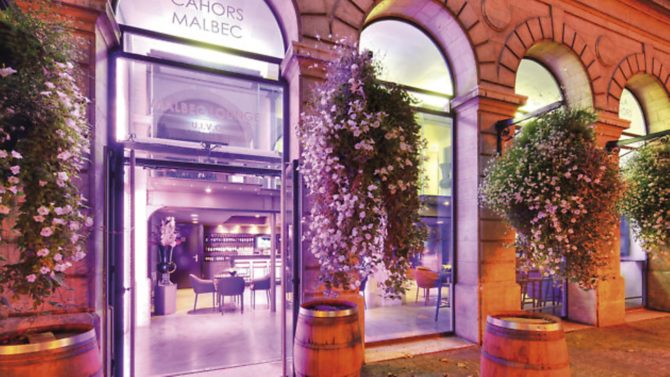Location spotlight: Cahors, Lot

Rich in history and abundant in style, the fame of Cahors is built on its unspoilt stone walls, rosy roofs and red wine, as Chris von Koettlitz discovers

Of all France’s world-famous wine regions, Cahors is not only one of the oldest but also one of the most interesting vignobles. First planted by the Romans some 2,000 years ago, the venerated vine happily took root on the verdant hillsides of this ancient terroir around the Gallo-Roman settlement of Divona Cadurcorum and along the River Lot.
The grapes were used to produce a full-bodied wine that travelled well, ideal for exportation throughout the known world. Cahors’ reputation reached its summit in the Middle Ages, when this ‘black wine’ enjoyed the patronage of popes and pilgrims, kings and tsars. Fierce competition from Bordeaux, heavy taxation and finally the dreaded phylloxera epidemic, which destroyed many of the vineyards, however, meant that this success was not to last.
The vineyards went into decline and faded into obscurity until they were rediscovered in the 1970s, when a group of dedicated wine producers decided that it was time to breathe new life into the ancient traditions and re-establish the regional Malbec-based wine to its former glory.

GLASS ACT
Today, Cahors is back! And we’re not just talking wine (although, undoubtedly, this is a very pleasant subject). The region is brimming with an infectious joie de vivre, combining stunningly beautiful scenery and a rich historical heritage with colourful festivals, a flourishing, increasingly organic agricultural community, and a distinct flair for the innovative and unusual. Cahors and its surroundings offer excellent opportunities for tasting the good life and finding just the right property to enjoy it to the full.
“Cahors is a préfecture, a regional hub, which means it is a lively, bustling town all year round, unlike many tourist hotspots where you see a virtual shut-down through the winter,” says local estate agent Ludovic Mouly.
“We have a dynamic international community and facilities are excellent; there’s good interaction with the welcoming local population, making it easy to integrate and feel at home. For example, the chamber of commerce organises French courses for foreigners who have moved into the area, but English courses are just as popular, as residents with businesses or foreign neighbours like to brush up on their language skills so they can communicate with everyone.”
LIVE IN THE VINES
Property prices are still attractive and lower than in neighbouring Dordogne. “Basically, there are two price brackets,” explains Ludovic. “The most buoyant price range is between €150,000 and €300,000; depending upon location, this will buy you a character or modern townhouse or apartment with one to three bedrooms, or a countryside cottage.
“These prices are back to pre-recession values of around 2004 and, of course, the strong pound makes buying in the Eurozone especially appealing to UK buyers.
“The other price bracket is between €600,000 and €800,000. Here, we’re talking about larger properties with pools, successful gîte complexes, manor houses and châteaux that would have been priced at €1.5m and over before the 2008 crisis. So there are good deals to be made, whether you’re contemplating a life-changing move with the family or trying your hand at wine producing.”
Traditional farm renovation projects are increasingly difficult to come by; Ludovic stresses the importance of getting in touch with local estate agents and providing them with a clear set of requirements, in order not to miss out on opportunities.
“French estate agents do not always place all their properties for sale on the internet, as many clients prefer to be discreet,” he says. “This is especially true for wine estates and businesses, so come and talk to us – most agents speak English these days.”
RISE AND RISE
The tourist industry has also profited from Cahors’ revival, with vineyards welcoming visitors to have a look behind the scenes, learn more about their noble art and taste the wines. Whites and rosés are now also available as well as the more traditional deep reds.
There are plenty of opportunities for a pleasant stroll alongside the town’s historic buildings, the famous Pont Valentré and the city’s shops and secret gardens. New cycle paths and hire boats provide a fun way to explore the area at leisure, stopping for an idyllic picnic en route. Vineyard life never tasted so sweet.
Share to: Facebook Twitter LinkedIn Email


